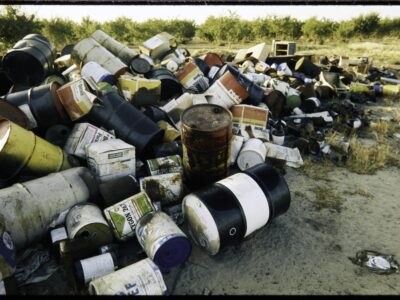Exploring Potential Challenges to EPA’s New Source Performance Standard: PART III
CCS for coal power plants, but not natural-gas power plants?
This post is the third in a mini-series (see first and second posts) exploring likely legal challenges to the New Source Performance Standard (NSPS) for power-plant greenhouse gas emissions under Clean Air Act § 111(b), and how those challenges might affect the Clean Power Plan.
 In my first post on EPA’s New Source Performance Standard (NSPS) for greenhouse gas emissions from new and modified fossil-fuel-fired power plants, I explored some of the legal arguments regarding whether carbon capture and sequestration (CCS) technology is “adequately demonstrated” within the meaning of Clean Air Act § 111. In my second post, I examined arguments related to whether partial CCS is the “best” system of emission reduction (BSER) for coal-fired power plants, considering its cost.
In my first post on EPA’s New Source Performance Standard (NSPS) for greenhouse gas emissions from new and modified fossil-fuel-fired power plants, I explored some of the legal arguments regarding whether carbon capture and sequestration (CCS) technology is “adequately demonstrated” within the meaning of Clean Air Act § 111. In my second post, I examined arguments related to whether partial CCS is the “best” system of emission reduction (BSER) for coal-fired power plants, considering its cost.
In addition to demonstrating to the D.C. Circuit (and likely also the Supreme Court, on appeal) that partial CCS is both “best” and “adequately demonstrated,” EPA must justify why the agency rejected highly efficient coal generating technology without CCS as the BSER for coal, while accepting highly efficient natural gas combined-cycle (NGCC) generating technology without CCS as the BSER for natural gas. Will EPA be able to defend its BSER determinations against allegations that the agency is anti-coal?
EPA claims that it rejected NGCC plants with partial CCS as the BSER for natural-gas-fired power plants because the agency “did not have sufficient information to determine whether implementing CCS for combustion turbines was technically feasible” (p. 518). As the expert agency, EPA receives deference in its technical and scientific judgments; but opponents likely will seek to persuade a court that EPA’s decision-making is plainly arbitrary. From the National Mining Association:
EPA’s decision to require CCS . . . is unreasoned and contradictory. CCS is not adequately demonstrated for NGCC or coal base load power plants. The status of the technology for either application is roughly the same – still immature and unproven in commercial scale power generation.
Even though courts should defer to EPA’s technical expertise in evaluating whether CCS is “adequately demonstrated” for natural-gas-fired power plants, the new rule’s apparent effect on coal as compared to natural gas could raise a court’s suspicions: even the most efficient new coal-fired power plants must (partially) impose the most expensive pollution-reduction technology available, while new natural-gas-fired plants are unaffected, because utilities are largely choosing to construct highly efficient NGCC plants anyway. Industry may even be able to convince a court that EPA is acting in bad faith in “attempting to indirectly regulate fuel use through the proposed emissions standard.”
EPA’s position is not much helped by its finding that the NSPS for natural-gas-fired power plants “will result in negligible CO2 emission changes . . .” (p. 29). EPA is quick to clarify that “the quantified benefits of the standards of performance would exceed their costs under a range of assumptions” (p. 29); still, it is readily apparent that without CCS, the natural gas NSPS will do nothing to reduce emissions below business-as-usual projections. (Opponents may also challenge use of the social cost of carbon in the cost-benefit analysis for the rulemaking, but that’s a discussion for another time.) Compare this result, though, with EPA’s reasoning for why the most efficient generating technology is not sufficient to be BSER in the context of coal: EPA determined that even the most efficient coal plant technologies without CCS (e.g., SCPC, supercritical circulating fluidized bed boiler, new IGCC unit) could not represent BSER for coal because none would reduce emissions below business as usual (pp. 424-29).
On first read, it may seem like EPA’s reasoning is inherently contradictory. Once again, however, zooming out to the broader context is critical. “Business as usual” emissions essentially means emissions equivalent to those from an NGCC plant, because that is what utilities are projected to build for the foreseeable future. An NGCC plant is simply less carbon-intensive than the most efficient coal-fired power plant. Therefore, even the most efficient new coal-fired power plant without CCS would not reduce emissions below business as usual—which is equivalent to NGCC-plant emissions. By requiring any new coal-fired power plants to reduce CO2 emissions to a level essentially equivalent to emissions from an NGCC plant, the coal NSPS—like the natural-gas NSPS—also does little to reduce emissions below business as usual.
Remember also that even though it may seem more stringent than the natural-gas NSPS, the coal NSPS actually allows coal-fired power plants to emit carbon dioxide into the atmosphere at a higher rate (1400 lbs CO2/MWh) than natural-gas-fired power plants (1000-1030 lbs CO2/MWh). The coal-fired power plant performance standard is more lenient because EPA took into consideration the costs of CCS as well as potential emission reductions.
Of course, this context will be meaningless to a court that feels like EPA is trying to game the performance standards. And the fact remains that EPA predicts the rule will have no significant effect on business-as-usual CO2 emissions—a rather extraordinary finding for any pollution-control regulation. This has even prompted some opponents to accuse EPA of issuing “a mere ‘pro forma’ new source rule” in order to “satisfy the statute’s precondition to issuing a 111(d) rule.” Section 111 grants broad authority to EPA to balance considerations in weighing alternative standards; but overall, whether EPA’s briefs and oral arguments can tell a coherent and convincing story will be determinative. It seems likely that the court’s reasoning will muddle inquiries into whether CSS is “adequately demonstrated” and “best,” and instead tell a more general story about EPA’s exercise of administrative authority.
As always, feedback from the LegalPlanet audience is welcome. Are EPA’s BSER determinations defensible? How do you think the D.C. Circuit and U.S. Supreme Court will respond?
Reader Comments
One Reply to “Exploring Potential Challenges to EPA’s New Source Performance Standard: PART III”
Comments are closed.







Question from the previous post asked and answered.
🙂
-MW